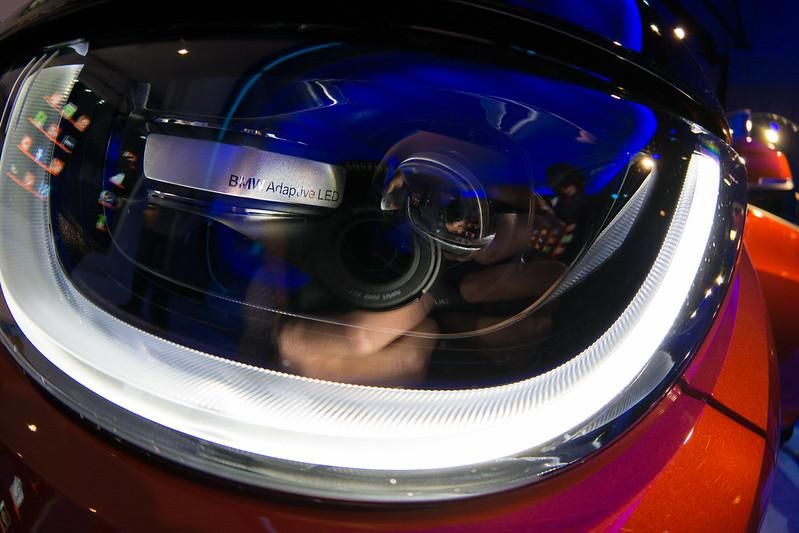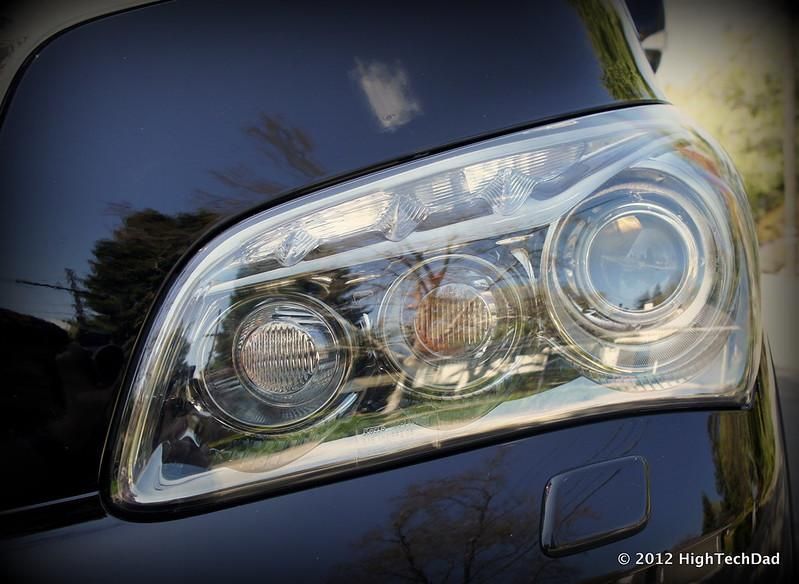LED, HID, or Halogen Headlights: What's the Difference and Which is Best?
Image by Evgeni Tcherkasski from Pixabay

Introduction
Headlights have come a long way from candlelight lamps hanging on motorized carriages. And with good reason: headlights represent one of the most important features of the modern automobile.
The beams of a car's headlights light the path ahead. They can show obstacles on the road at night or in low-visibility environments like rain and fog. They also act as a safety feature so that other motorists can see your vehicle.
When we discuss modern headlamps, they fall into three main categories. Halogen lamps are the most mature technology. Light-emitting diode lamps and high-intensity discharge bulbs make up the newer iterations of lights that are starting to overtake the industry.
As we begin our discussion, relate the different kinds of headlights to other lightbulb technologies - incandescent bulbs, neon lights, and LED lights. This will help to illustrate the types of technology that are being used by automakers today.
Let's summarize these three illumination methods and highlight their advantages and disadvantages to better understand where the auto industry is headed.
Image Credit: Nan Palmero / flickr

LED Headlights
LED headlights are the newest tech on the street. They feature brighter output than the standard, use less energy, and last for decades.
Electricity from the vehicle is passed through light-emitting diodes to efficiently produce light with little wasted as thermal heat.
LED is a solid-state technology. There is no fragile filament that can break. Neither do they lose brightness over time.
The largest disadvantage of LED technology is the price tag. LEDs are more expensive than halogen or HID lights.
Still, their durability and efficiency make the greatest positives for car manufacturers and owners switching to this top-of-the-line technology.
Image Credit: Michael Sheehan / flickr

HID Headlights
High-intensity discharge (HID) bulbs produce light by passing an electric current between two electrodes. Ionized gas inside the glass bulb glows to produce the bright light these bulbs are known for.
Think of HID headlights like a neon light on a building. However, neon gas is not used in these bulbs.
The ionized gas used may be mercury, sodium, metal halide, or xenon. The xenon bulbs produce the brightest light and are the most common in car headlights.
Xenon HID bulbs are twice as bright as their halogen counterparts and slightly dimmer than the LED variant. They are more energy-efficient than halogens too.
One of the drawbacks when using HID headlights is the cost. They are more expensive to purchase than halogens. Like halogens, they also do not last very long which means a greater cost of ownership over time.
Image Credit: Raniel Diaz / flickr

Halogen Headlights
Four out of five automobiles on the road still use halogen technology for headlights. It is still the factory default for most vehicle lines.
The tech used to brighten these bulbs is like incandescent bulbs used in a house. The bulbs use a wire filament with an electric charge passed through to produce light.
Halogen gas inside the glass bulb makes the filament glow even brighter. Reflective facets on the headlight housing bounce the produced light and direct it forward.
One of the byproducts of this technology is heat generation. The halogen bulbs can become quite hot during operation and care should be exercised not to handle the units until they have had a chance to cool.
The heat produced has the side effect of limiting the life of the bulb. They often must be replaced sooner than either of the other technologies mentioned.
Halogen bulbs are susceptible to damage from the oils in your hands. Use care when handling and installing them.
Another aspect of halogen lights is that they are far less efficient. It takes more power to light them, and this can drain a car's battery rather quickly.
On the other hand, halogens are also a lot less expensive than LED or HID bulbs. This is probably a good case for why the auto industry hasn't completed the leap to either of the newer technologies for all vehicle production.
Image Credit: Jeff Djevdet / flickr

Comparison of LED, HID, and Halogen Headlights
What do we find when we do a direct comparison of the three technologies mentioned above? Each produces light in a different way and results in a variety of colors and intensities.
Halogens produce light from a glowing filament. HIDs use electrically charged and ionized gas to create illumination. LEDs pass electricity through a semiconductor microchip to emit light.
Halogen lights tend to produce yellow to white light. This frequency of visible light is most conducive to seeing at night and in different weather conditions. The output of halogens is often less than the other two methods of light production.
HIDs and LEDs can create light in a broader spectrum. This color temperature is measured in Kelvins. Longer wavelengths of light have a lower Kelvin measurement.
- Yellow (3000 Kelvin) - A soft yellow light like a halogen bulb
- Off-White (4300 Kelvin) - A yellow-white light
- Pure-White (5000 Kelvin) - Sunlight
- Crystal-White (6000 Kelvin) - Blue-white light
- Pale Blue (8000 Kelvin) - Bluish light with a more modern look
As the wavelength shortens and the Kelvin measurement increases, the light produced transitions from yellow to white to blue. As the light trends toward blue, it becomes harsher on the eyes and makes it more difficult to see.
Halogens will give a dimmer light whereas HID headlights will be more intense and the light will illuminate further. LED bulbs are slightly brighter than HID bulbs. HIDs also have the tendency to create an uncomfortable glare for other drivers.
Image Credit: CC0 Public Domain / pxhere

Conclusions
The three types of headlights on modern vehicles have the same goal but achieve it in different ways.
Halogens, like incandescent bulbs, use a glowing filament and often produced a dimmer light. But they are cheap and still the most common technology in use across the industry.
High-intensity discharge bulbs resemble neon lights because they produce light by a glowing gas that surrounds two electrodes. The beam produced is more efficient and brighter than halogen bulbs and lasts longer. They are also more expensive.
LED headlights generate light by passing electricity through a semiconductor and are the most expensive option. But the advantages outweigh the cost.
They are far more durable and efficient than either halogens or HIDs. They have a slight brightness advantage over HID lights without the glare issue.
The different technologies used have their own advantages and disadvantages in performance and cost. For example, the bluer light of HIDs may give a reduced performance while driving in fog and rain.
Consider all the pros and cons before deciding on which headlights are right for your car. And do your research on local ordinances when it comes to making alterations with an aftermarket kit to change the technology used for your headlights.
We hope this comparison of halogen, HID, and LED technology has been enlightening for you. Happy driving!
Updated